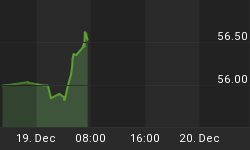Robert Shiller's book Irrational Exuberance made quite a splash when it appeared on the scene back in 2000. It now seems that it is about to repeat the performance, or so thinks Geoffrey Colvin, Fortune's senior editor-at-large (We're still too exuberant, 17 December 2005). Martin Bashir of the ABC thinks likewise (Robert Shiller, the Prophet of House Prices). Other commentators are also jumping on the Shiller bandwagon inspired, I suspect, more by the possibility of embarrassing President Bush rather than an urge to educate their readers.
In view of the commentariat's new found interest in Shiller's observations perhaps we should take a quick look at what he said and concluded. It is true that he correctly pointed out that the Dow Jones Index more than tripled in five years, leaping from 3,600 in 1994 to over 11,000 by 1999. This was an unprecedented and, in Shiller's opinion, unsustainable rise. Although I agreed with Shiller I did ask the question: "But where do we go from here?"
Examining the sustainability side Shiller noted that during this great leap in the Dow the America's GDP rose by less than 30 per cent, of which about 50 per cent was accounted for by inflation. Therefore the real increase in GDP was only about 15 per cent. Although corporate profits rose by nearly 60 per cent, this picture was not particularly bright when we consider that profits rose from a recessed base.
Looked at historically profits were not particularly high. Moreover, from an economic perspective there were very few real profits anyway. This is supported by Shiller's comments that the rise in the Dow "is not matched by real earnings growth".
Shiller drew attention to the 1920s bull market which came to an end with the 1929 crash. (In fact, it was terminated in December 1928 when the Fed froze the money supply). Coming to price earnings ratios we find that for 2000 prices were 45 times earnings while they were 35 times earning for 1929.
That earnings ratios were completely out of kilter were not only obvious but a clear danger signal; but this always happens in these circumstances. He also referred to 1901 and 1966 as other major peaks in the market. But pointing to major peaks in market activity tells us nothing about causes.
Let's begin with the 1901 peak, which had its origins in the 1890s. Great amounts of gold began to flow into America in 1896 leading to a considerable expansion of bank credit and this fuelled a boom and a stock market take-off. Now the increase in massive amounts of credit also triggered a merger mania, just as it did from 1924-1929, that largely occurred in the years 1899-1902. This is also the period that saw the market peak in 1901. In 1903 the economy had gone into a depression. This was no coincidence.
The end of the First World War witnessed a contraction in the American economy which was quickly reversed by rapid monetary growth that brought about the 1919-20 boom. The Fed applied the monetary breaks causing the 1920-21 financial crisis which became the sharpest contraction in American history.
The recovery gave America the 1920s boom and the infamous 1929 crash. The 1966 market peak followed the same pattern. Rapid credit expansion fuelled the boom in stocks while a monetary tightening caused them to drop.
It is no great insight to point out that earnings ratios plummeted once these markets crashed, even dropping to zero during the great depression. This is what happens during depressions. The trick is explaining the forces at work and not to confuse symptoms with causes. Each of these boom periods was preceded by rapid credit expansion. Each crash was preceded by monetary tightening. Looked at in this light the so-called business cycle becomes a monetary roller-coaster. When Greenspan raised interest rates by nearly two percentage points between June 1999 and May 2000 it should have been seen as a red alert, as it was clearly an attempt to rein in credit growth.
As a postscript I should point out to readers that the preceding view is the same as the monetarists' explanation of booms and busts. And yet there are fundamental and irreconcilable differences between the monetarists and the Austrians.
The latter examine and stress the microeconomic consequences of credit expansion, explaining why so-called price levels are not measures of inflation and how, even where the price level is 'stable', a recession can still come about.















